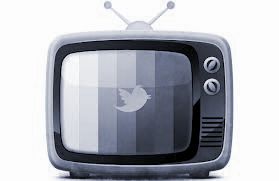In Twitter’s own words, the way the world is experiencing TV, is fundamentally changing. Viewers have become more active and share experiences as the events unfold on television screen. The fact that tweeting about television programmes is becoming the new normal, Twitter has found itself being instrumental in how TV is actually measured. In order to capitalise on this opportunity twitter has started TV ad targeting. This was made possible by the acquisition of Bluefin labs and allows marketers to engage directly with people on twitter who have been exposed to Ads on the television sets. Here is Techcrunch’s take on the development:
“Twitter TV Ad Targeting lets advertisers target these people with Twitter Promoted Tweets ads that show up in their stream. Those could include pure text tweets reinforcing the commercial, a link they can follow to learn more or make a purchase, or even a Vine to give viewers a second dose of video marketing”.
So is this new strategy working? Well in an analysis conducted for Twitter, advanced marketing analytics firm MarketShare, has found that TV ads were more effective when combined with Twitter paid advertising for the category examined. This study – which focused specifically on new mobile service subscribers in the UK, has found that for mobile carriers, TV advertising generated new customers at an average of $131 each when there wasn’t Twitter paid advertising. But for those carriers combining television ads with Twitter advertising, customer acquisition cost for TV advertising dropped to about $83 or £50 – a 35% improvement.
“We have always believed that Twitter is a powerful complement to television, and this study supports that,” was the view of Adam Bain, President of Global Revenue for Twitter. “MarketShare’s ground-breaking work, using big data techniques and leading edge analytics, helps us quantify how Twitter can be a force multiplier, making television advertising even more effective than ever.” Twitter as a social force can directly boost TV ratings when users use the site to share their immediate reactions to a show, an August, U.S. Nielsen study reported. The TV industry is hoping to turn the tide of migrating viewers increasingly turning to DVRs and cloud services like Netflix and Amazon Lovefilm. Good luck with that. I can tuck into a Breaking Bad boxset anytime I like on Netflix, how is conventional tv going to compete with that?
As marketing complexity continues to expand, big brands will continue to seek new insights into how marketing channels interact, and how best to allocate marketing dollars. Fresh from its IPO, Twitter has quantified the financial impact of paid advertising thanks to Marketshare, on its platform with true return-on-investment metrics that can help brands make more informed marketing choices. It will interesting to see if future analysis will further explore the interplay between Twitter, TV and other marketing channels across more categories and geographies.

Hayden Richards is Contributor of IntelligentHQ. He specialises in finance, trading, investment, and technology, with expertise in both buy-side, sell-side. Contributing and advising various global corporations, Hayden is a thought leader, researching on global regulatory subjects, digital, social media strategies and new trends for Businesses, Capital Markets and Financial Services.
Aside from the articles, interviews and content he writes for IntelligentHQ, Hayden is also a content curator for capital markets, analytic platforms and business industry emerging trends. An avid new media explorer Hayden is driven by a passion for business development, innovation, social business, Tech Trading, payments and eCommerce. A native Trinidadian, Hayden is also a veteran, having served with the Royal Air Force Reserves for the past 10 years.
Follow Hayden on Twitter @HaydenARichards, linkedin.com/haydenhrichards and http://www.scoop.it/u/hayden-richards










